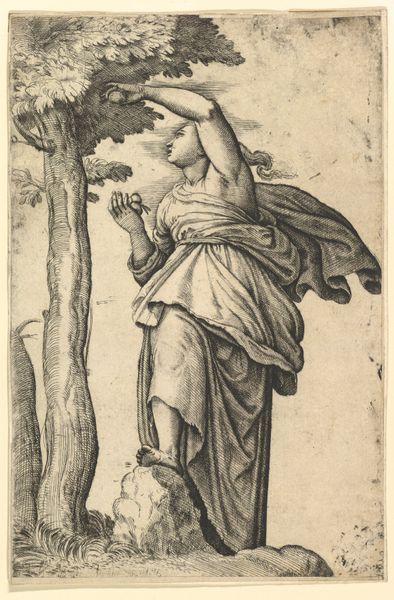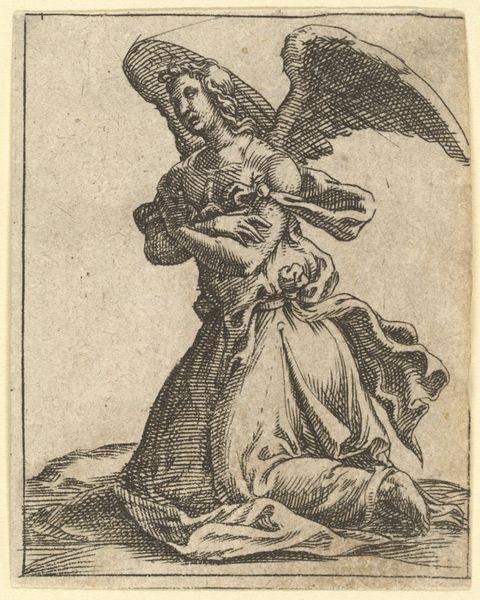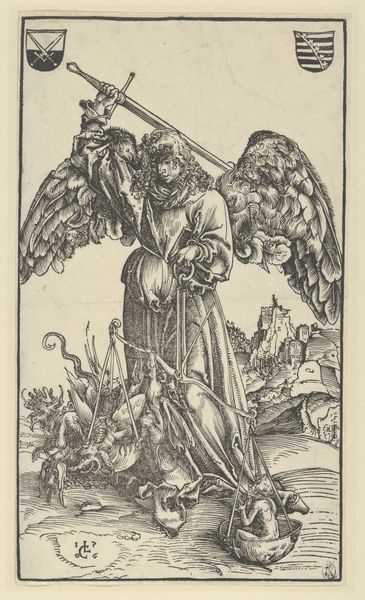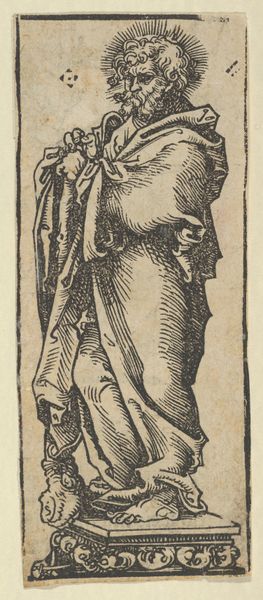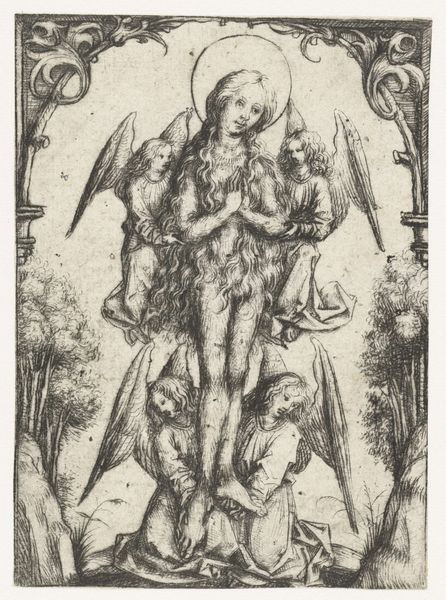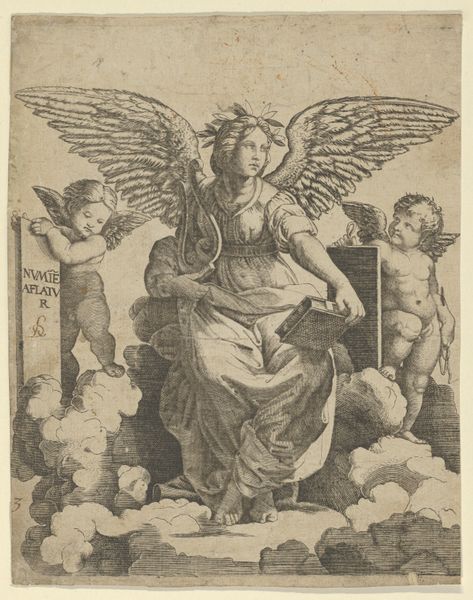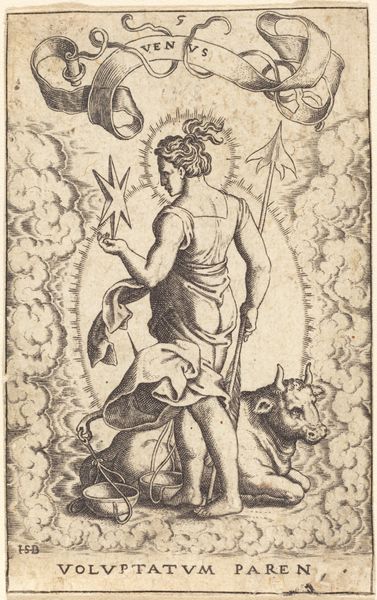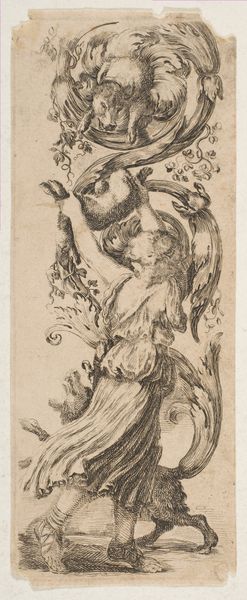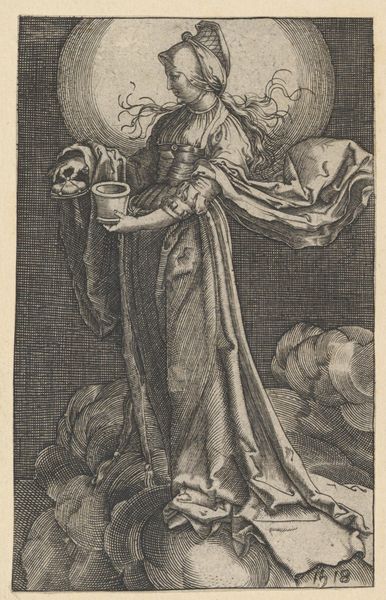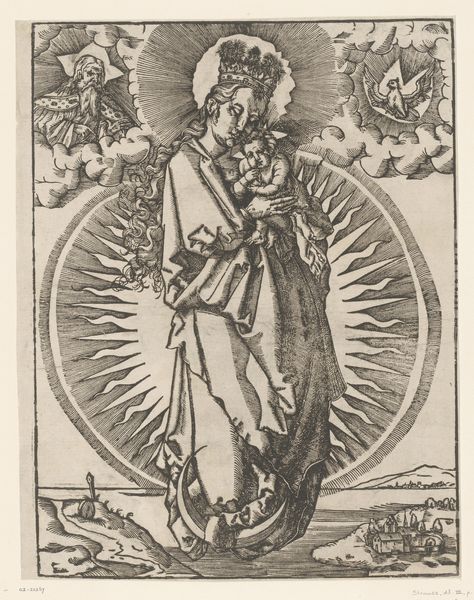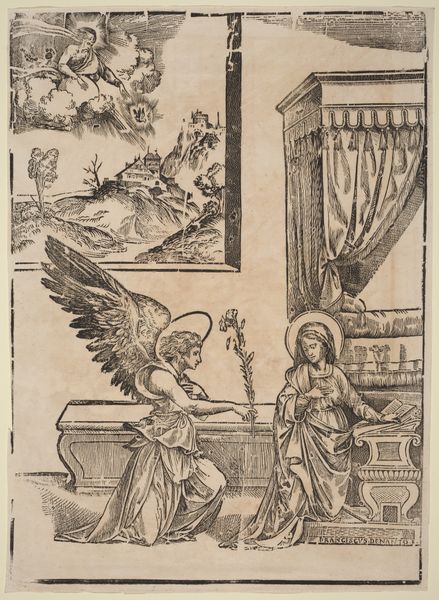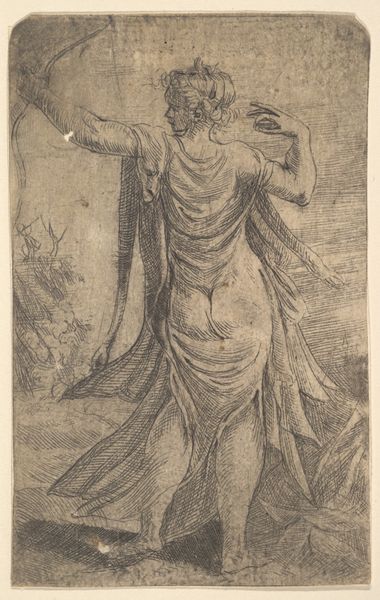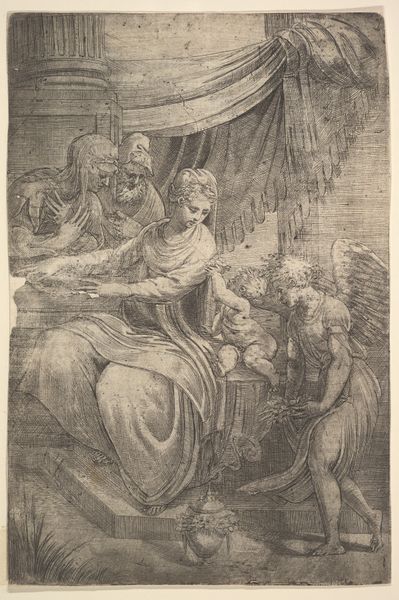
drawing, print, engraving
#
drawing
#
allegory
# print
#
mannerism
#
figuration
#
engraving
Dimensions: Sheet (trimmed): 9 5/16 in. × 6 in. (23.7 × 15.3 cm)
Copyright: Public Domain
Antonio Fantuzzi made this print of Cybele in the 16th century, using etching. This is a printmaking process, where a metal plate is coated with a waxy, acid-resistant material. The artist then scratches an image into the wax, exposing the metal. When dipped in acid, the exposed lines are eaten away, creating an image that can be inked and printed. Notice how Fantuzzi uses this technique. The etched lines define Cybele’s form, and the texture of the lions she holds. The process influences the artwork's appearance, particularly the linear quality and the subtle gradations of tone achieved through varying the density and depth of the etched lines. Etching allowed for relatively quick reproduction, fitting into the developing culture of print and distribution. In the 1500s, this was the beginning of mass culture as we understand it today. Understanding the materials and processes used to create an artwork is crucial to appreciating its full meaning, challenging any strict division between fine art and craft.
Comments
No comments
Be the first to comment and join the conversation on the ultimate creative platform.
